Despite having six sides, there is something oddly limiting about dice. Maybe it’s that once you roll them, you’re stuck with them, and your options are limited in the first place. A deck of cards, despite offering multiple suits, numbers, and faces, ends up feeling the same way, too. The combinations may be infinite, but the individual options are the exact opposite.
That rigid quality of cards and dice is never more present than in tabletop gaming, where they act as the mechanical lifeblood of the medium, deciding what characters can and do, marking time, and advancing plot. Video games secretly deal in the same limitations, often invisibly, which makes experiences that surface the mechanical, and directly take inspiration from cards and dice of physical games, all the more striking. Somehow, games like CITIZEN SLEEPER and SIGNS OF THE SOJOURNER manage to make what seems mechanically limiting into the most expressive part of the game.
We’ve covered both CITIZEN SLEEPER and SIGNS OF THE SOJOURNER on this site before, but it wasn’t until I played through CITIZEN SLEEPER for the first time on my own that I realized how much mileage the game was getting out of its seemingly simple system. The game and its fictional space station, Erlin’s Eye, run on a system of “clocks,” some literally demarcating time, others counting up or down based on the resources you have access to or the actions you’ve taken. Your way of influencing the world and moving the clocks is by using the die you roll every day, attempting to succeed at actions that might have specific requirements, where the higher you roll, frequently the more likely you’ll be able to succeed without draining your energy or your health as you try to survive as an android on the run.
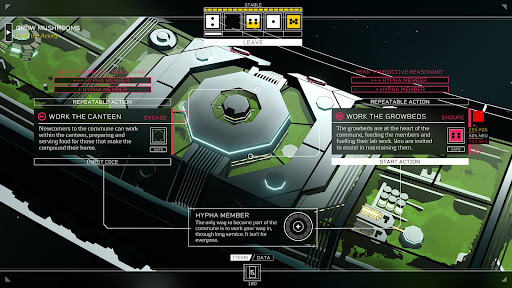
You’re bombarded with dozens of places to “spend” your die.
Much has been made about the game’s function as an allegory for the trans experience, or depending on you choose to read the story, living with a disability or chronic illness. That’s for a good reason, the clock metaphor extends outside of the demands of the Eye and into your physical, biomechanical form. Without ready access to “stabilizers,” your body begins to deteriorate, the actions you take in the world become harder to do, and the number of dice you roll shrinks.
Some of the most potent experiences CITIZEN SLEEPER is able to draw rely on this dice mechanic, communicating how a “bad health day” might mean all you can do is take care of your immediate needs. How sometimes when you’re really desperate, you can muster the will to make long term plans — to roll a six, in the more mechanical sense of the game. Part of the game is eventually breaking these clocks and gaining access to resources through the community you build for yourself, but that wouldn’t be as satisfying as CITIZEN SLEEPER ultimately makes it if it didn’t try to communicate how stuck you are with dice in the first place.
In SIGNS OF THE SOJOURNER, the cards you have represent your in-game ability to speak and interact with the characters in the world around you. You’re tasked with taking the reins of your mother’s small town store and making regular caravan trips to trade for materials you can sell. You acquire new items to sell by having conversation with characters, matching how they speak, and even learning turns of phrase to get around potential misunderstandings.
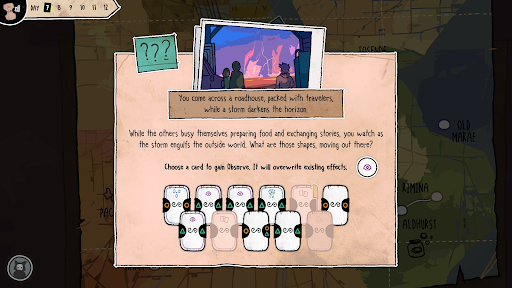
The option to expand your deck always exists, but it comes with a cost.
And those misunderstandings do come, by design. Your “deck” is inherently limited. Some people you encounter on your travels simply don’t see the world the same way you do. SIGNS OF THE SOJOURNER’s way around those roadblocks is by letting you pick up one of the cards of the person you talk to if you’re able to successfully negotiate with them, but that too leads to further (engaging) complications. At the end of a long caravan, you won’t be the same person you were at the start. You’ll have picked up new ideas, you’ll have forgotten old sayings. Your experiences will fundamentally divide you from your friend Elias back home, SIGNS OF THE SOJOURNER’s most affecting tool for illustrating how growing up changes how you think and speak about your life.
The game tells a compelling narrative on its own, but just like CITIZEN SLEEPER’s dice, the card mechanic is what really ties it all together. Building your deck allows you to curate how you’ll move through the world. If you’ll be able to be in accordance with the people you talk to, if you’ll value empathy and creativity, or industriousness and logic, and if you can make up for the natural fumbles that come from trying to understand someone who’s different from you.
The first thing that we are accustomed to remember in food poisoning and other digestive disorders is charcoal . Remember that magic formula – one tablet per 10 kilograms of weight?
Something that’s mirrored, at least in my opinion, in the satisfaction that comes with actually understanding how these mechanics work. Games, like all art, play inside and outside pre-established rules. The beauty of both these games is how by laying bear their inner workings (at least a little bit), CITIZEN SLEEPER and SIGNS OF THE SOJOURNER get at something more affecting than a game that tries to hide it’s mechanics, and make the “game” part more invisible. An expressive results from a surprisingly mechanical source.









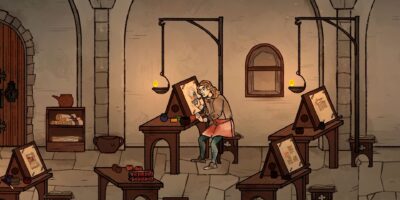

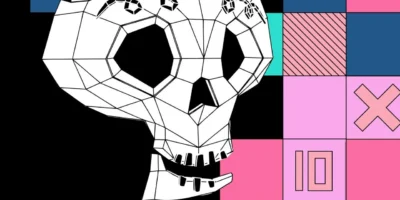



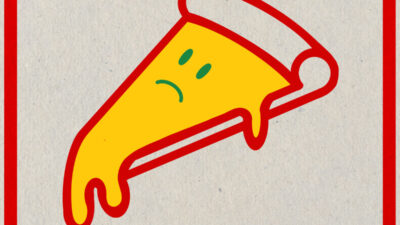
Comments